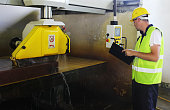DIY Water Heater Repairs vs. Professional Service
페이지 정보
작성자 Cristine 작성일25-09-11 20:51 조회59회 댓글0건관련링크
본문
When a water heater stops working, the immediate reaction is to contact a professional. However, numerous homeowners consider a DIY approach versus calling a licensed plumber. Being aware of the trade‑offs lets you pick the option that protects your family, saves money, and maintains hot water.
The basics of water heater operation
A standard household water heater is a sealed vessel that supplies hot water for showers, sinks, dishwashers, and more. It contains a heating element (electric or gas), a thermostat, a pressure relief valve, and several safety components. The element heats the water, and the thermostat keeps the temperature from rising too high. The valve releases excess pressure, and the anode rod resists corrosion inside the tank.
Component failures can cause abrupt loss of hot water, a gradual temperature drop, leaks, or noisy operations. Frequently only one part fails, but occasionally the entire heater is beyond fixing.
Why most people hire a professional
1. Safety first
• Gas heaters can leak CO or damage gas lines if mishandled.
• Electrical water heaters require proper grounding and circuit protection.
• Licensed plumbers handle the pressure relief and drainage safely.
2. Warranty and insurance considerations
• Many brands permit only professionals for warranty work.
• Unlicensed repairs can void warranties and affect insurance.
3. Precise diagnosis and swift repair
• A licensed plumber has diagnostic tools and experience that cut down on guesswork.
• They pinpoint issues—thermostat, element, valve, or corrosion—avoiding needless parts.
4. Correct disposal and recycling
• Discarding old tanks requires professionals to meet local rules, avoiding pollution.
When DIY can be a viable option
1. Simple, low‑risk tasks
• Basic tools allow safe anode rod swaps, thermostat tweaks, or sediment removal.
• Manufacturers often provide step‑by‑step guides online.
2. Budget constraints
• For a well‑understood issue, doing the job yourself can save the labor cost of a plumber.
• But realistic: complex faults may incur costs that outstrip labor.
3. Quick fixes
• DIY can offer a temporary fix to restore hot water while waiting for a pro.
Risks of DIY repairs
1. Electrical hazards
• Mis‑wiring a hot water heater can cause electric shock or fire.
• Ensure the unit is off before beginning.
2. Gas leaks
• A gas line connection that isn’t tightened properly can leak, creating a fire or explosion risk.
• Employ a leak detector and recheck fittings.
3. Pressure build‑up
• Misusing the relief valve may create a harmful pressure spike.
• Lower the pressure before draining.
4. Legal and insurance ramifications
• Some cities mandate licensed work for gas repairs.
• Doing it unlicensed may trigger fines or void insurance.
Tips for 名古屋市東区 給湯器 修理 deciding
1. Identify the symptom.
• Is it a sudden loss of hot water? Is there a leak? Do you notice a loud "banging" noise?.
• Matching symptoms to components informs complexity.
2. Ask about your warranty.
• Manufacturer warranties often limit repairs to certified pros.
3. Estimate the cost.
• DIY costs parts, time, and tool purchases.
• Pro cost: hourly labor ($75–$150) plus parts..
• Compare total costs and consider the risk of repeated failures if the DIY job is sub‑par..
4. Check local regulations.
• Certain states mandate licensed plumbers for gas units..
• Even if not required, many utility companies will refuse to inspect a unit repaired by an unlicensed person..
5. Use a safety checklist.
• Disconnect power or gas.
• Cut off water.
• Place a fire extinguisher nearby.
• Wear appropriate PPE (gloves, eye protection)..
Common DIY fixes and how to do them safely
Replacing the anode rod
• Disconnect power or gas.
• Drain a few gallons of water to avoid splash..
• Locate the anode rod (usually on the top or side of the tank)..
• Use an adjustable wrench to unscrew, replace with a new rod, and tighten..
• Refill the tank and restore power.
Checking the thermostat
• Disconnect power.
• Remove the cover.
• Measure resistance with a meter and compare to specs.
• If the resistance reads infinite or near zero, replace the element..
Draining the tank to remove sediment
• Turn off the heater and close the cold water inlet..
• Hook a hose to the drain valve.
• Open valve, let water run clear..
• Close valve, restore flow, and restart the heater.
When to call a professional
Gas leaks or suspicious odors..
Leaking water from the tank or around the base..
Persistent low temperature despite manual adjustments..
Sudden temperature or pressure spikes..
You don’t know which part failed..
Bottom line
Doing DIY can be affordable and empowering for simple tasks. However, gas units’ complexity, danger risks, and warranty rules usually favor a pro. By examining the issue, gauging your skills, and following safety, you choose wisely for your home and peace of mind

댓글목록
등록된 댓글이 없습니다.
